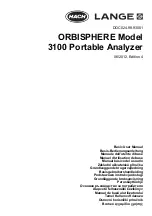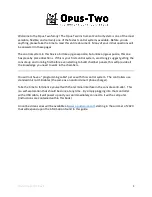
20
6 Setup
OPTISWITCH 3200 C • NAMUR
31357-EN-210702
The characteristics reversal can be carried out with the DIL switch.
You can choose between falling characteristic curve (switch position
max.) and rising characteristic curve (switch position min.). This al-
lows you to output the desired current.
Modes
•
min. - rising characteristic curve (High current when immersed)
•
max. - falling characteristics (Low current when immersed)
The NAMUR output can be switched over to falling or rising charac-
teristics (see also "
Function table
").
The simulation key is located in a recess on the upper side of the
electronics module. Push the simulation key with a suitable object
(screwdriver, pen, etc.).
When the key is pushed, a line break between sensor and process-
ing unit is simulated. The signal lamp on the sensor extinguishes. The
measuring system must signal a fault and take on a safe state when
the key is pushed.
Keep in mind that downstream connected instruments will be acti-
vated during operation. This allows you to check the correct function
of the measuring system.
Control lamp (LED) for indication of the switching condition
•
yellow = High current ≥ 2.2 mA
•
dark = Low current ≤ 1.0 mA
•
yellow (flashing) = Failure ≤ 1.0 mA
6.3 Function table
Level switch OPTISWITCH 3200 C
The following table provides an overview of the switching conditions
depending on the set mode and the level.
Note:
The mode setting on the NAMUR amplifier must be selected in such
a way that the switching output takes on safe state in case of failure (I
≤ 1 mA).
Level
Signal current - Sensor Control lamp
Falling characteristics max.
≥ 2.2 mA
Falling characteristics max.
≤ 1 mA
Characteristics reversal
(2)
Simulation key (3)
Signal lamp (6)
















































